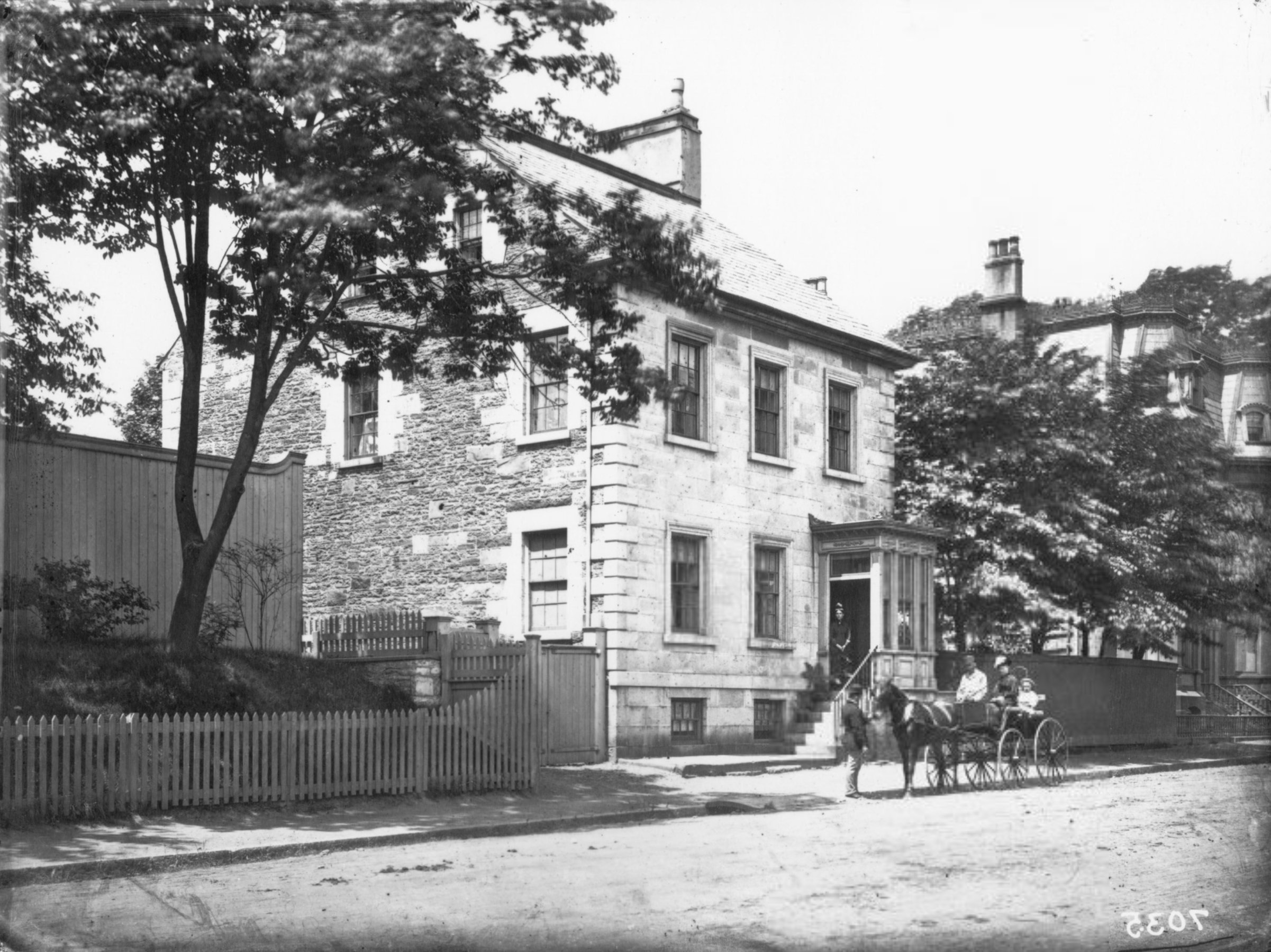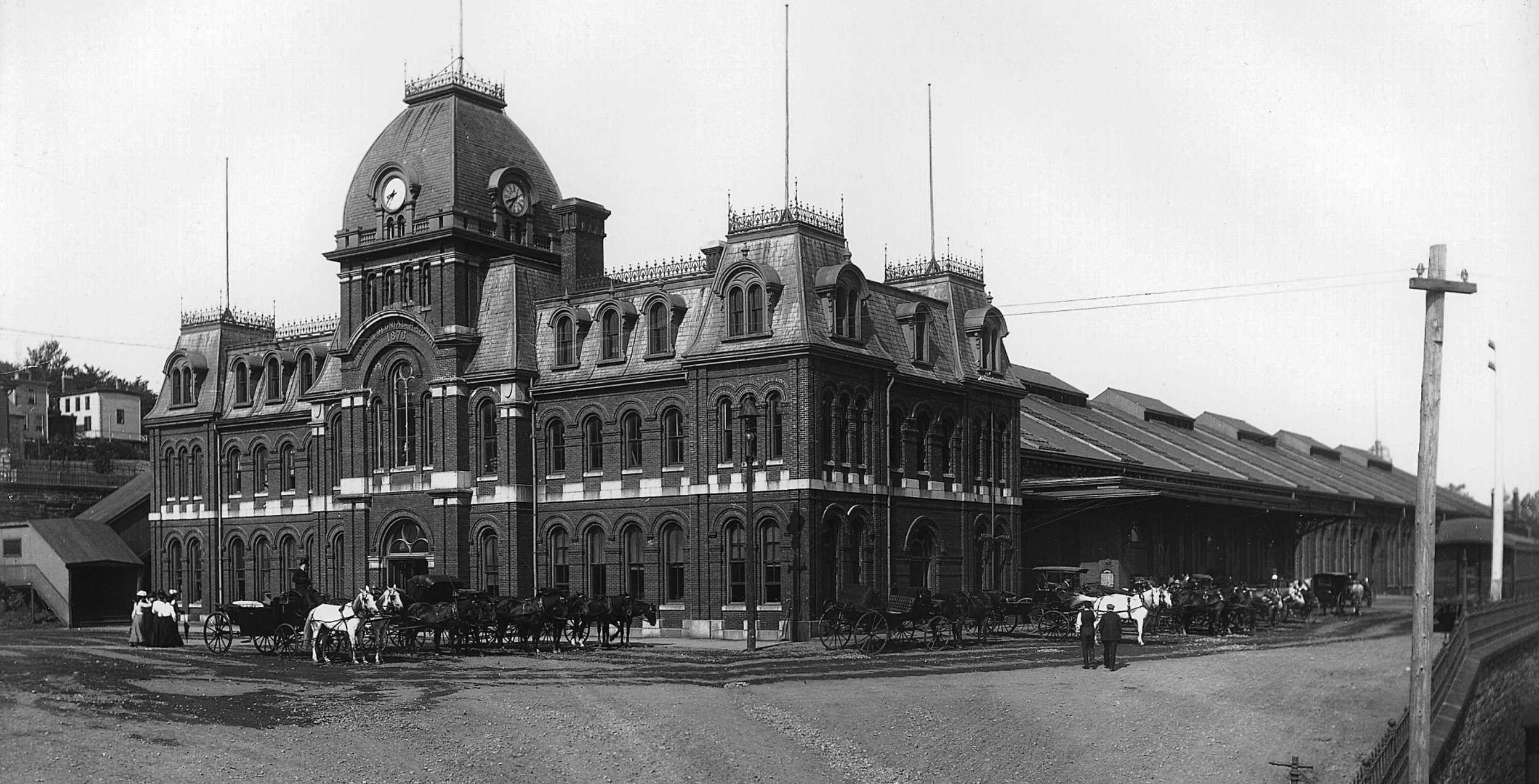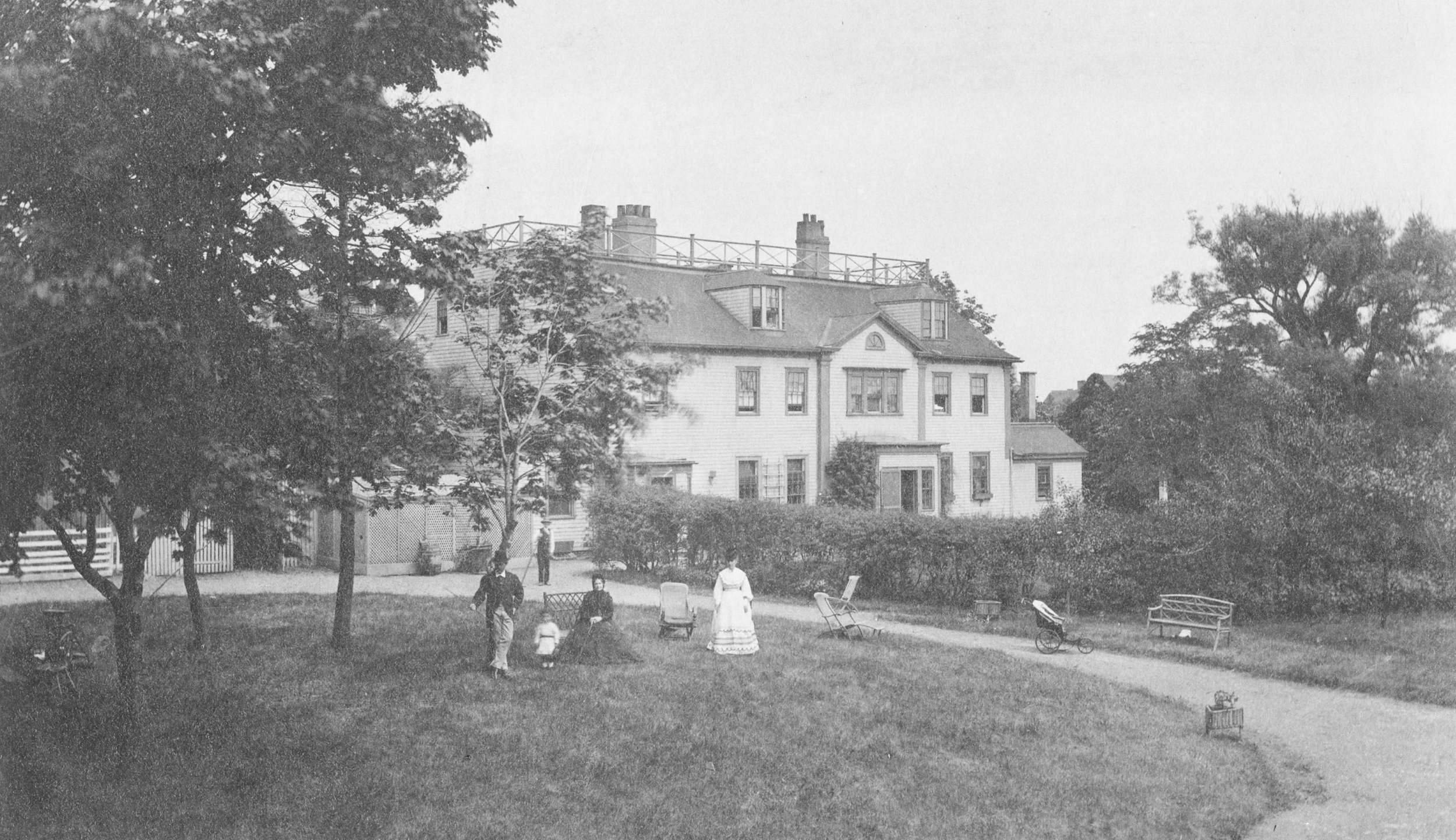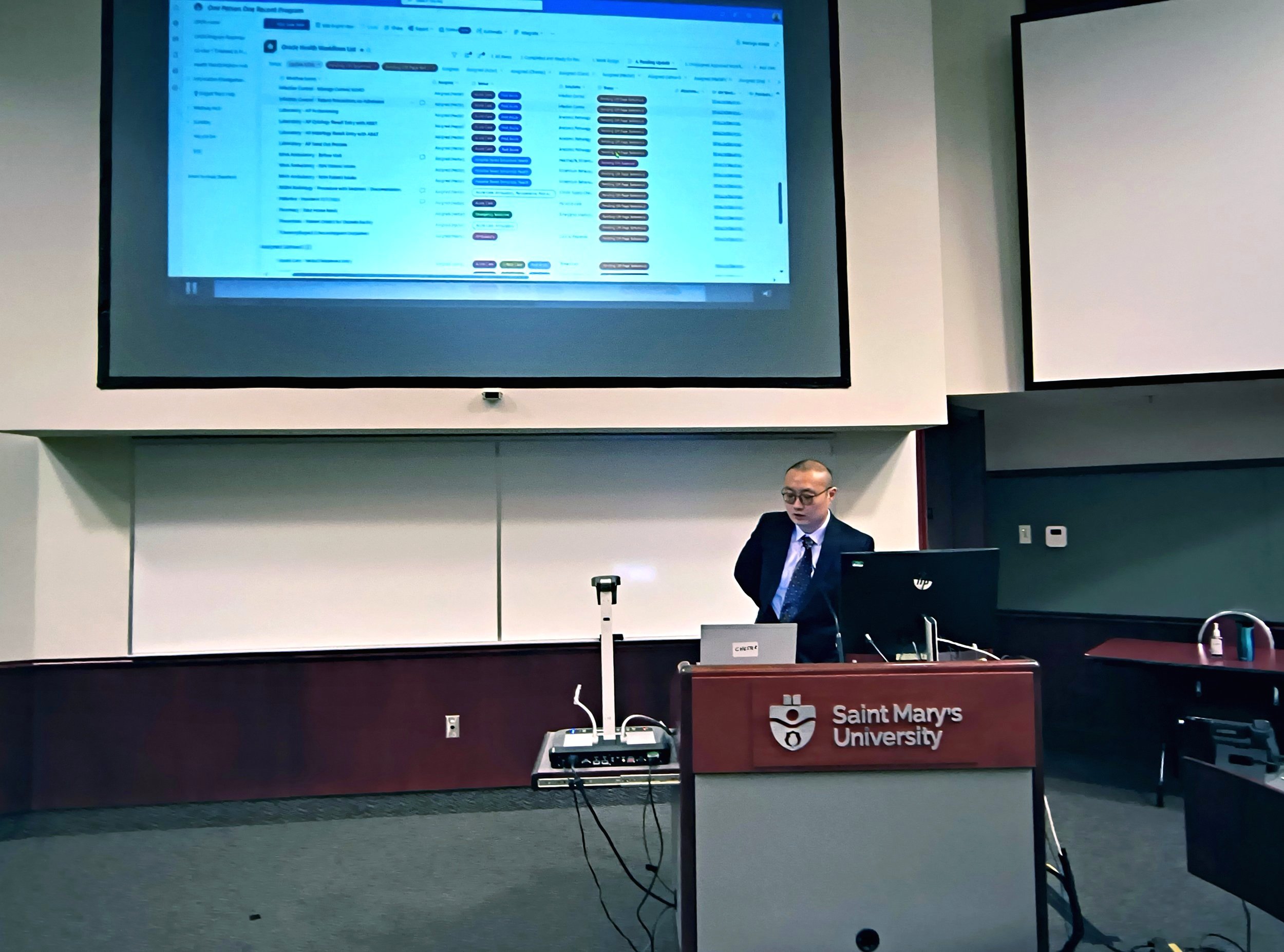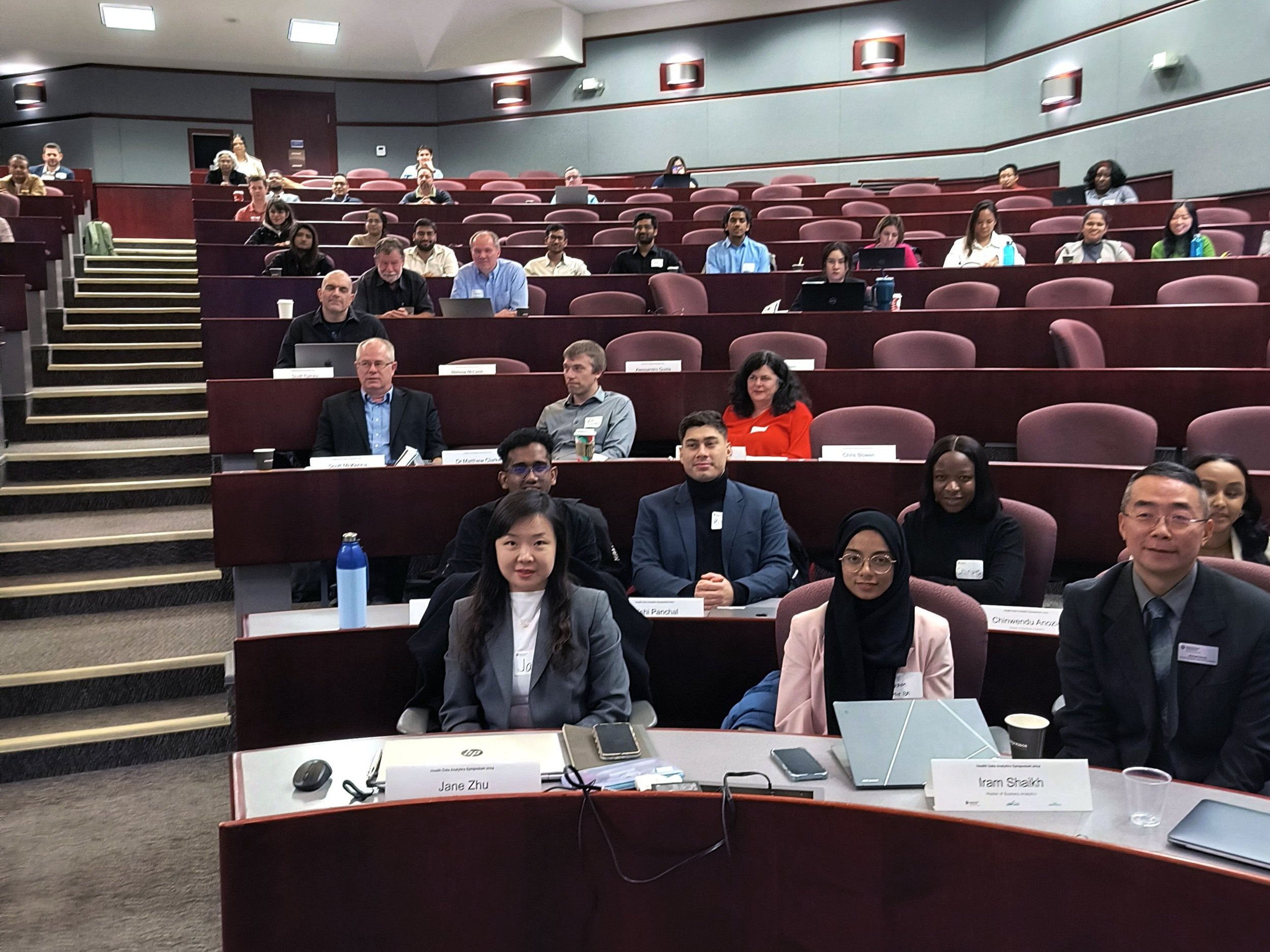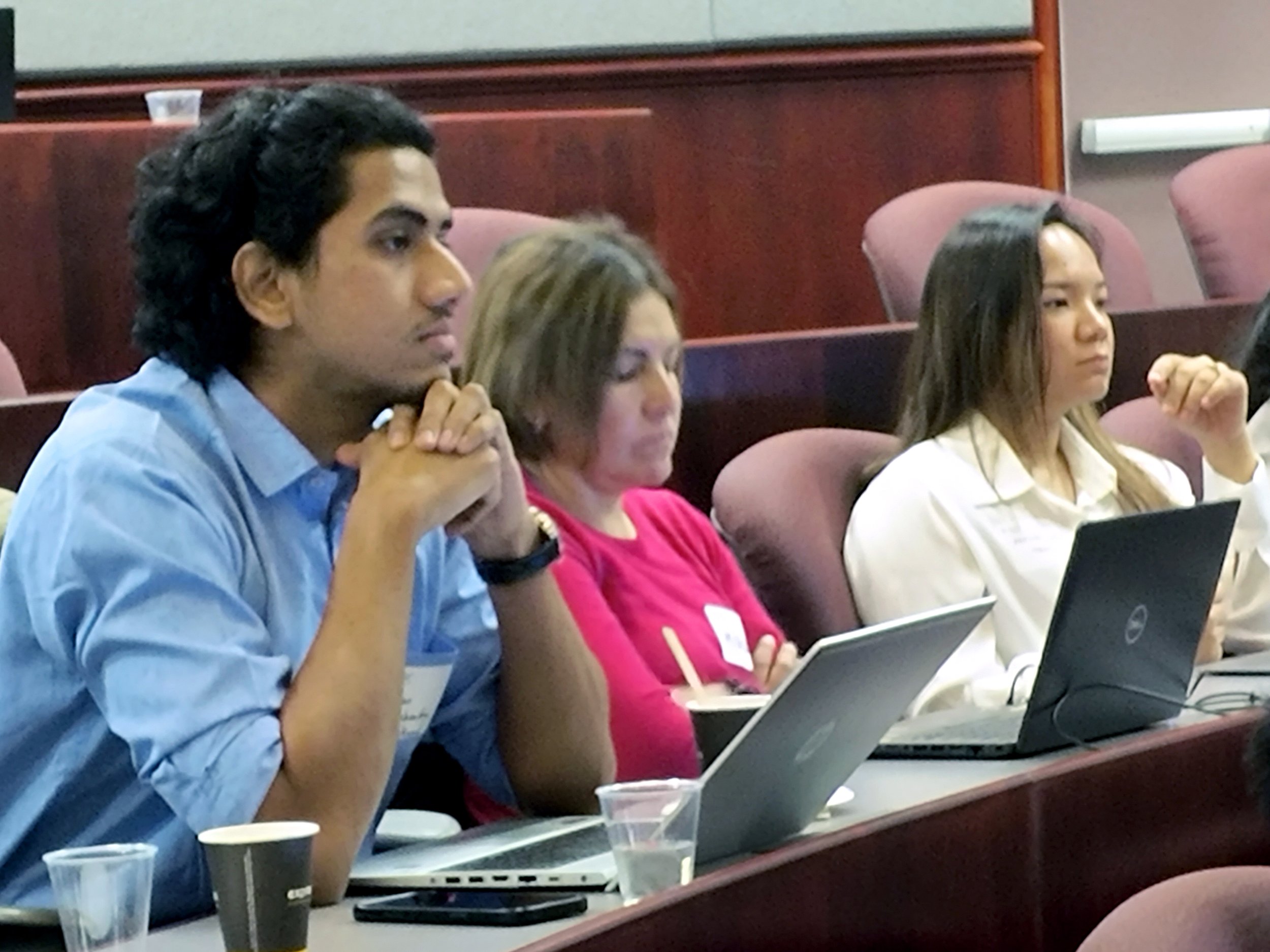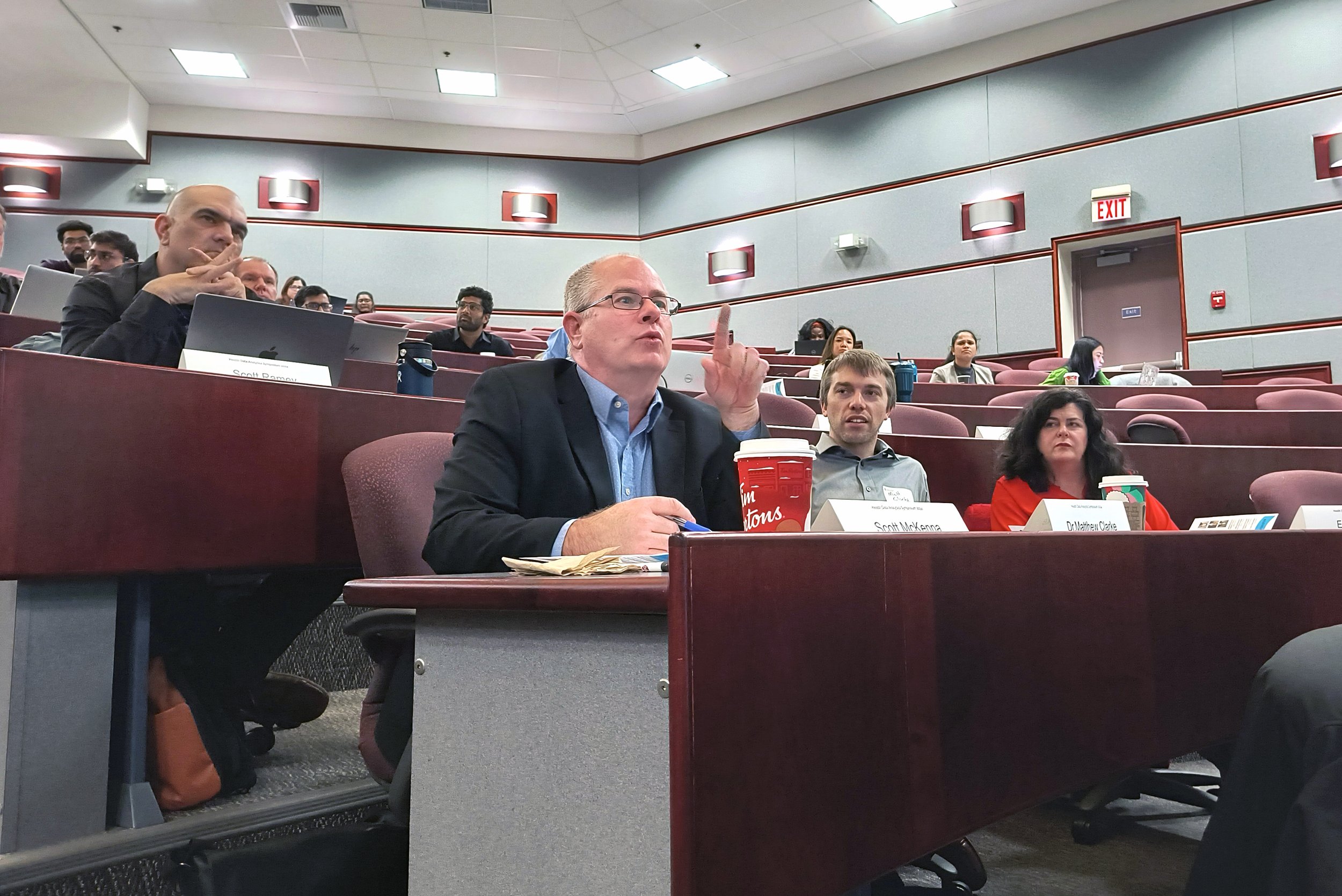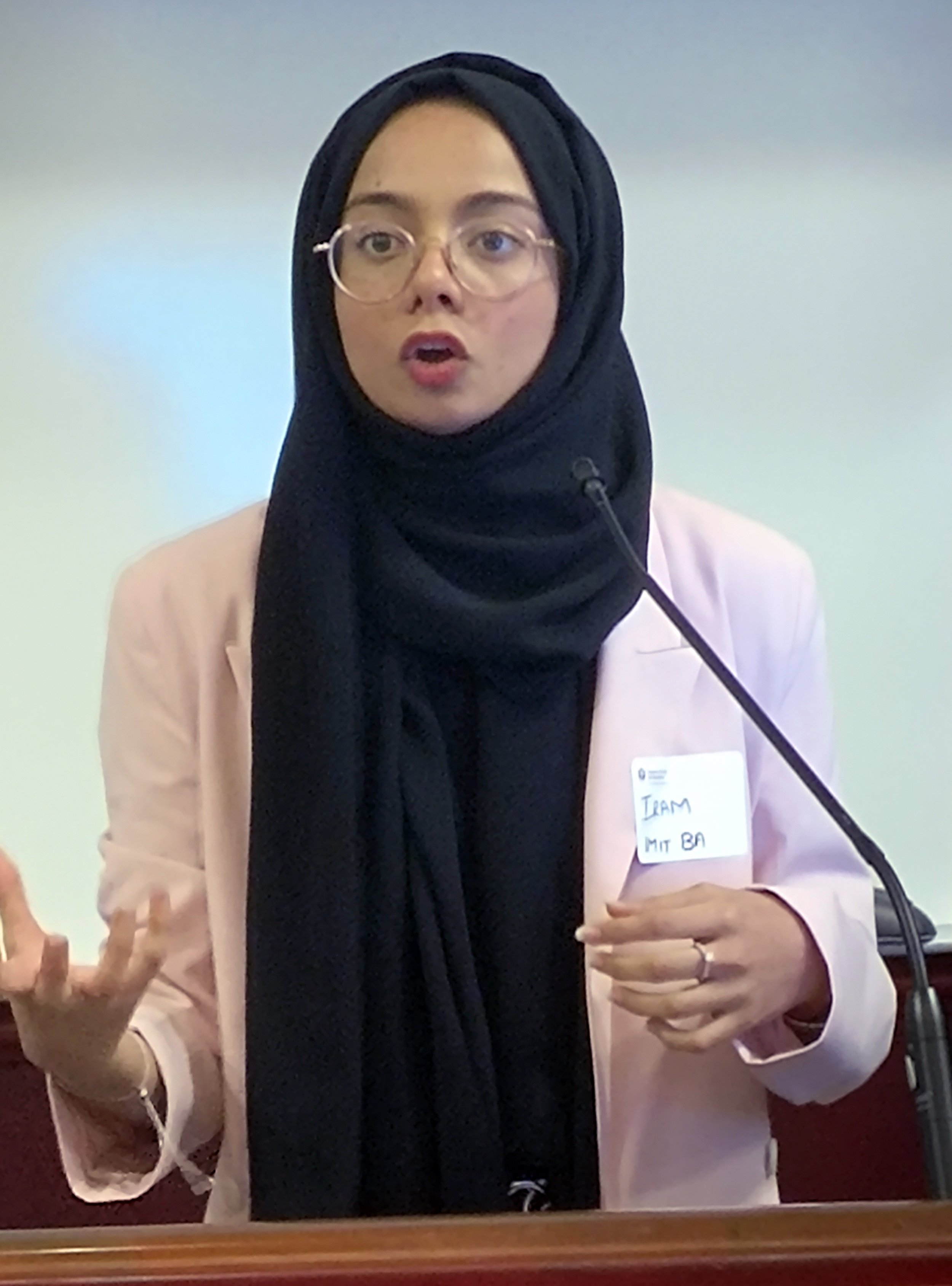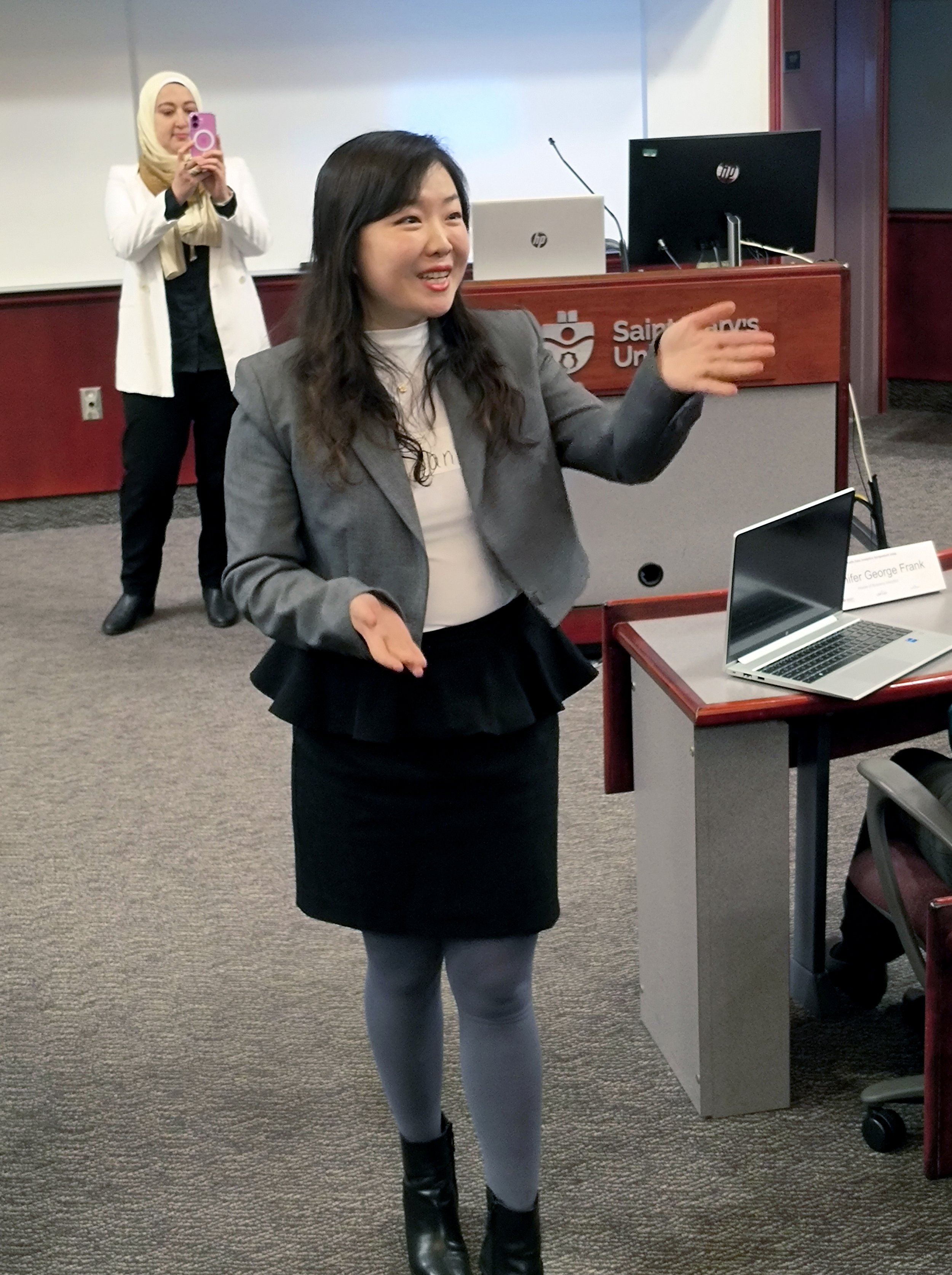Arjun Asokakumar, Director of Data Science at RBC, was the keynote speaker at Responsible Leadership Day 2024
Empowering Students to Shape a Sustainable Future
A 2024 analysis by Statistics Canada reveals a growing trend, with 30% of businesses in the information and cultural industries, 25% in professional, scientific, and technical services, and 19% in arts, entertainment and recreation planning to use Artificial Intelligence (AI) in the next year.[1]
In a world where AI seems to be everywhere, how can students prepare themselves for what the future could bring?
The Sobey School of Business brought together inspiring leaders and forward-thinking students for its sixth annual Responsible Leadership Day on November 22, 2024.
The event kicked off with a thought-provoking keynote on how AI-driven automation may reshape job roles and skill requirements, delivered by Arjun Asokakumar, Director of Data Science at Royal Bank of Canada (RBC). Attendees also had the opportunity to engage with expert panelists on the upcoming challenges of AI.
Responsible Leadership Day at Saint Mary’s University
In today’s competitive job market, students must understand how to effectively work with and respond to artificial intelligence to stay ahead, not just in the business world but across multiple areas. Regardless of where you are in the organization, AI has the potential to impact all levels.
How do machine learning and algorithms help solve people’s problems?
Although AI may seem complex and mysterious, at its core, it’s all about us—people. AI is programmed by people, learns from people, and ultimately is used by people. It learns by reading our books, analyzing our paintings, listening to our music, downloading our history and studying our habits.
Because it learns from us, AI inevitably inherits our flaws and biases. What we think, feel, and believe becomes embedded in its algorithms. AI cannot judge right from wrong—it processes data without judgement. For example, when using AI to sort through resumes for hiring, factors like postal codes, names, genders, and gaps in employment due to parental leave can unintentionally introduce biases into the process.
The ability to recognize and understand these biases is crucial for using AI effectively and responsibly. As AI becomes more integrated into the workplace, employers are placing greater value on this crucial skill.
As artificial intelligence becomes more prevalent, the need for specialized knowledge remains high. Understanding how to judge the information AI provides you—and being able to critically evaluate its output—is key to using the technology responsibly.
As an employer, there are steps you can take too. For example, pushing for transparency on what data was used in creating the AI programs and asking for evidence and results.
The expert panel emphasized innovation and plans for action toward a more responsible future, all while embracing an entrepreneurial mindset.
Dr. Stephanie Kelley, Scotiabank Professor in Innovations in Business Technology and Assistant Professor of Management Science at the Sobey School of Business at Saint Mary’s University, moderated the discussion.
Panelists included Roshanak Sadeghi-Zadeh, Director of People and Belonging at IWK Health, Saeed El-Darahali, President and CEO of SimplyCast, and Sandra Pasquini, Senior Vice President, Human Resources at Empire Company Limited.
[1] Analysis on expected use of artificial intelligence by businesses in Canada, third quarter of 2024
About Responsible Leadership Day
Responsible Leadership Day is a flagship event for the Sobey School of Business. It brings together students and researchers with industry and government partners and highlights the school’s commitment as signatories of PRME, a UN initiative that promotes Principles for Responsible Management Education. The Sobey School of Business is committed to upholding sustainability, as demonstrated by its research, student projects, and course content.







